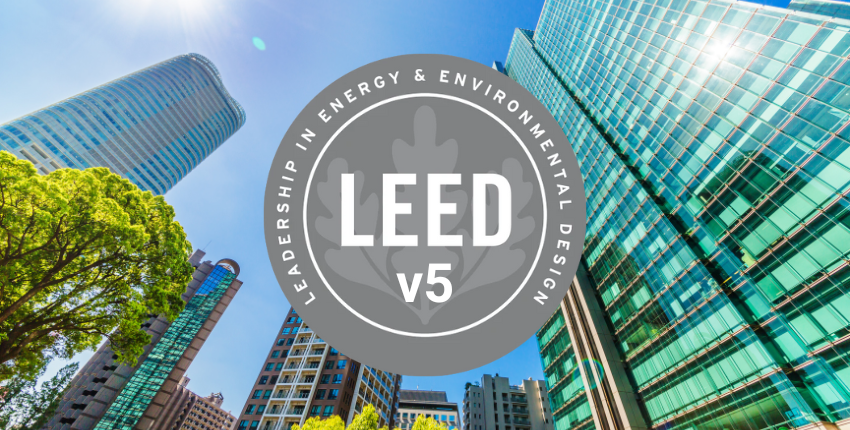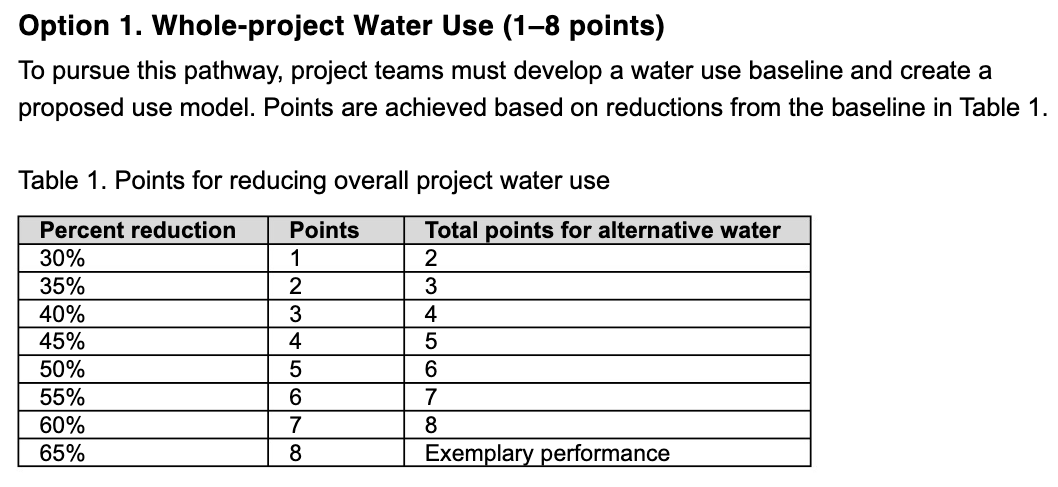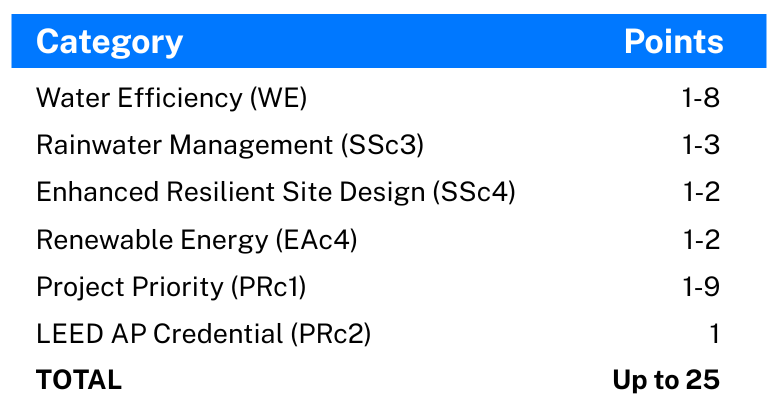LEED v5 updates and its impact for onsite water reuse implementation


As buildings seek to promote sustainable practices, many apply for a certification called LEED: Leadership in Energy and Environmental Design. Developed by the USGBC (United States Green Building Council), LEED is a globally recognized green building certification that helps identify projects that utilize environmentally responsible, resource-conscious, and mindful design.
In April 2025, the United States Green Building Council (USGBC) released LEED v5, which has been called the most substantial update to the Leadership in Energy and Environmental Design standard in over a decade.
New projects may apply for LEED v5 certification beginning May 2025. The previous certifications, LEED v4 and v4.1, will be closed for new projects after March 2026. Projects in early concept and design stages may be thinking about the switch and what they may need to do to achieve the new requirements of LEED v5. So what are the major updates?
LEED v5: what’s new?
LEED v5, according to USGBC, focuses on three key impact areas:
- Decarbonization: targeting reductions in operational, embodied, refrigerants, and transportation emissions;
- Quality of life by improving health, well-being, resilience, and equity for building occupants and their communities, making spaces not just environmentally friendly but also people friendly; and
- Ecological conservation and restoration by emphasizing strategies that limit environmental degradation and contribute to the restoration of ecosystems.
Another overarching emphasis is on performance reporting through long-term monitoring and data protection. Multiple credits in v5 require post-occupancy reporting, such as water usage data, for at least five years of post-occupancy. This emphasis represents a shift in LEED’s thinking to performance-based certification, rather than design-based.
LEED v5 & onsite reuse
Onsite reuse can earn a project many LEED points through water recycling conservation, energy savings, and resource recovery. Let’s break down how many LEED points a typical onsite reuse system may earn in the new LEED credit framework. Complete descriptions of each credit can be found at USGBC’s Credit Library.
Water efficiency (WE) credit
The Water Efficiency credit will contain the bulk of the points that onsite reuse projects can target.
According to the Water Efficiency Overview in its Reference Guide, LEED v5 “integrates water efficiency with new stewardship strategies, redefining water as a valuable and limited resource.”
The Guide describes innovative water stewardship approaches as necessary to address issues such as water stress, climate change, and population growth.
The Credit can now be achieved in either a Whole-project Water Use framework, or a Prescriptive Framework.
The Whole-project Water Use option looks at the site on a comprehensive water usage basis and awards points based on reduction from that baseline. This new option for a comprehensive project water balance is indicative of LEED’s shift toward a more holistic approach to building data and analysis.

In most projects, an onsite greywater or blackwater system can achieve 5-8 points in this category. A typical multifamily project may reduce potable usage by 50% by using recycled water for flushing and laundry and may increase that percentage offset if irrigation and cooling towers are also supplied with recycled water. A typical commercial building may reduce potable usage by 90% by using recycled water for flushing alone.
The Prescriptive Framework is the alternate method and involves adding points in several categories for a maximum of 8 points total. The categories are:
- Fixture & fittings-calculated reduction
- Appliance & process water
- Outdoor water use
- Optimize process water use
- Water reuse
LEED v5 gives new emphasis to Water Reuse by providing a specific subcategory that provides 1 point for a Reuse-Ready System, and 2 points for Alternative Water Sources.
Renewable energy (EAc4) credit
Onsite reuse projects that utilize wastewater heat recovery may earn points toward Energy Efficiency and Renewable Energy credits.
Wastewater heat recovery represents an inherently renewable energy because it is a byproduct of essential building functions. By capturing embedded heat that goes down the drains and transferring that energy to building plumbing or hydronic systems, energy savings can be realized.
Depending on the building design and use of the recovered heat energy, it is expected that 1-2 points in this category may be earned.

Rainwater management (SSc3) credit
This credit would apply to any onsite reuse project that captures rainwater and stormwater for reuse onsite, thereby reducing runoff volume and avoiding contributing to flooding downstream.
This credit additionally mentions that “for projects that collect and reuse…to meet building end uses, 1 additional point can be earned.”

Eligible end uses for this credit include irrigation, flushing, makeup water systems such as for cooling towers and boilers, and process water demand.
Enhanced resilient site design (SSc4) credit
This credit aims to “reduce the risk of catastrophic impacts” by designing buildings with improved resiliency.
Onsite reuse falls into this category as it provides water resilience, reducing the reliance on municipal water systems, and providing the building with a semi-closed loop of water supplies in an off-grid scenario.
One of the highest priority hazards that this credit addresses is Drought. Drought is seen as a high likelihood for future occurrences, with climate projections indicating more severe droughts in the coming years. Improving water resilience by reusing treated wastewater onsite is a clear method of addressing water scarcity created by drought conditions.
This credit requires two high priority hazards to be addressed to gain points, so an additional resilience feature would be needed.
Project priority (PRc1) credit
This credit addresses regionally important issues, encouraging projects to think creatively to “test and accelerate new sustainable building practices and strategies.”
Onsite reuse can address regional concerns by creating resilience in buildings while reducing load to municipal wastewater systems and conserving potable water. These issues are common areas of concern in urban developments as well as in many rural developments.
When onsite reuse is also combined with wastewater heat recovery and solids recovery, further points may be considered for innovation and impact to the project’s region. Solids recovery, for example, could be processed into soil amendments for a city park.
Examples of credits that projects can target in this category can be found in USGBC’s Project Priority Library.
This credit offers between 1-9 points.
Total points possible
While each project will differ, an onsite reuse system will typically help the project earn LEED points in these main categories. Other potential categories are also listed below.

If you’re looking to maximize your project’s LEED potential, onsite water reuse solutions can help earn up to 62% of total points needed, depending on what certification level you’re seeking.
- Certified: 40-49 points
- Silver: 50-59 points
- Gold: 60-79 points
- Platinum: 80+ points

